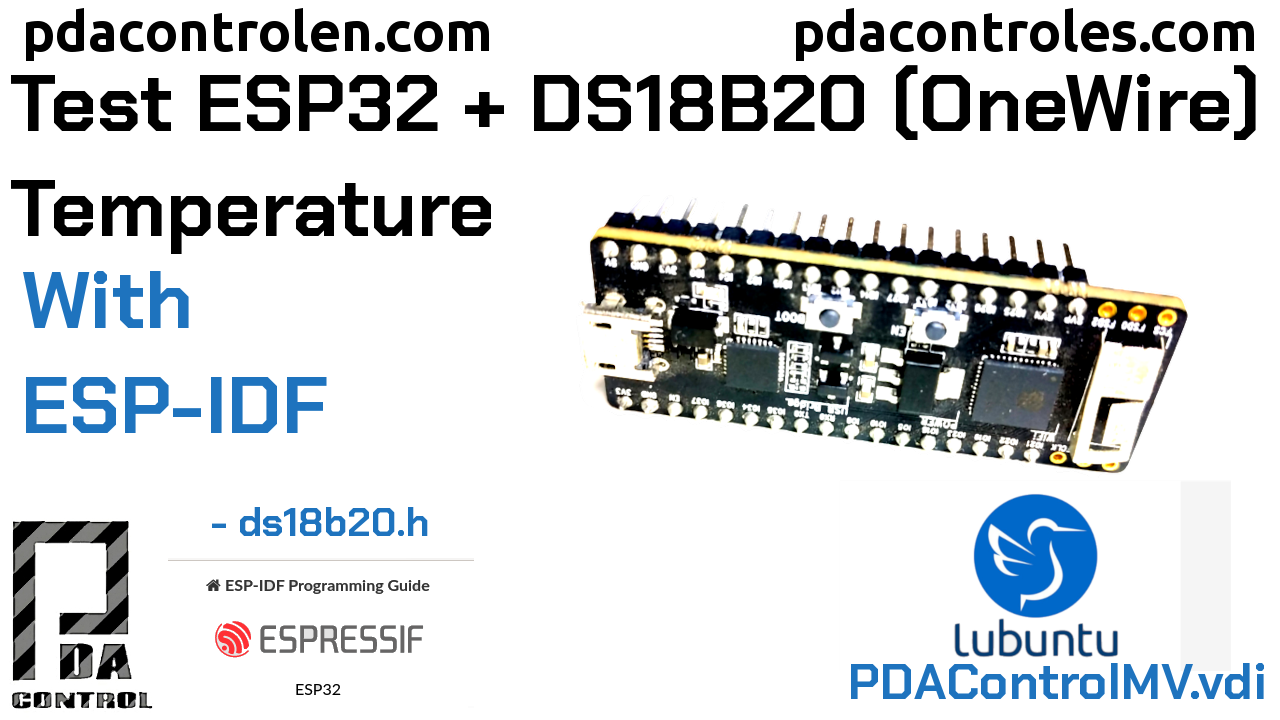
ESP32 & Sensor DS18B20 en ESPIDF Temperatura (Onewire) PDAControl
The ESP32-C6 has a built-in sensor used to measure the chip's internal temperature. The temperature sensor module contains an 8-bit Sigma-Delta analog-to-digital converter (ADC) and a digital-to-analog converter (DAC) to compensate for the temperature measurement.. temperature_sensor_event_callbacks_t::on_threshold: As this function is.

Esp32 built in temperature sensor
The internal_temperature sensor platform allows you to use the integrated temperature sensor of the ESP32, RP2040 and BK72XX chip. Note. Some ESP32 variants return a large amount of invalid temperature values, including 53.3°C which equates to a raw value of 128. Invalid measurements are ignored by this component.
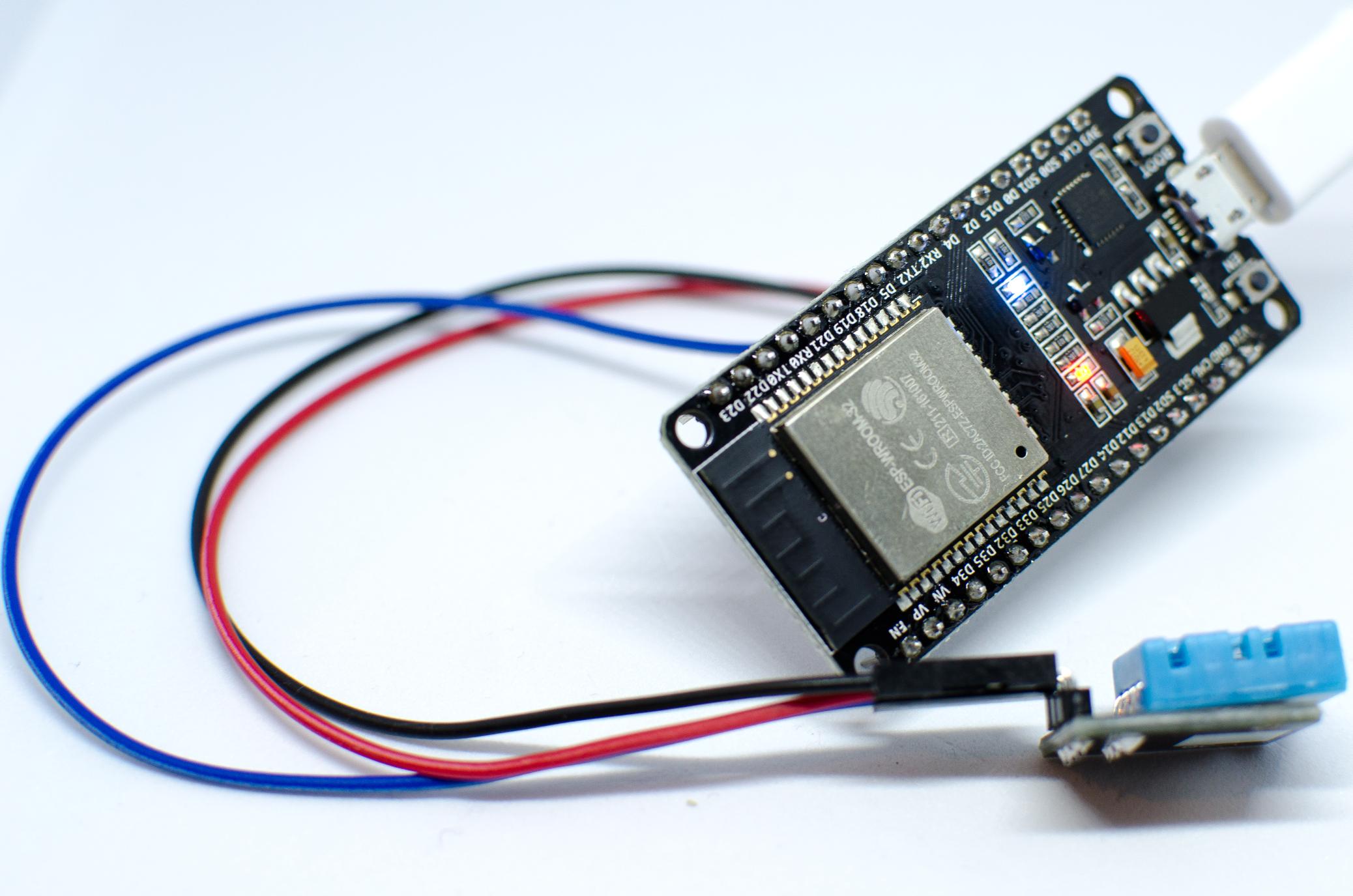
Esp32 built in temperature sensor
Technical Specifications and Features: The Temperature Sensor module uses an 8-bit ADC and a DAC to make adjustments for the temperature offset. Measuring Range: The ESP32 temperature sensor can measure a range of temperatures from -40 to 125 degrees Celsius. Accuracy: The in-built temperature sensor accuracy varies between +/- 1 to +/- 3.
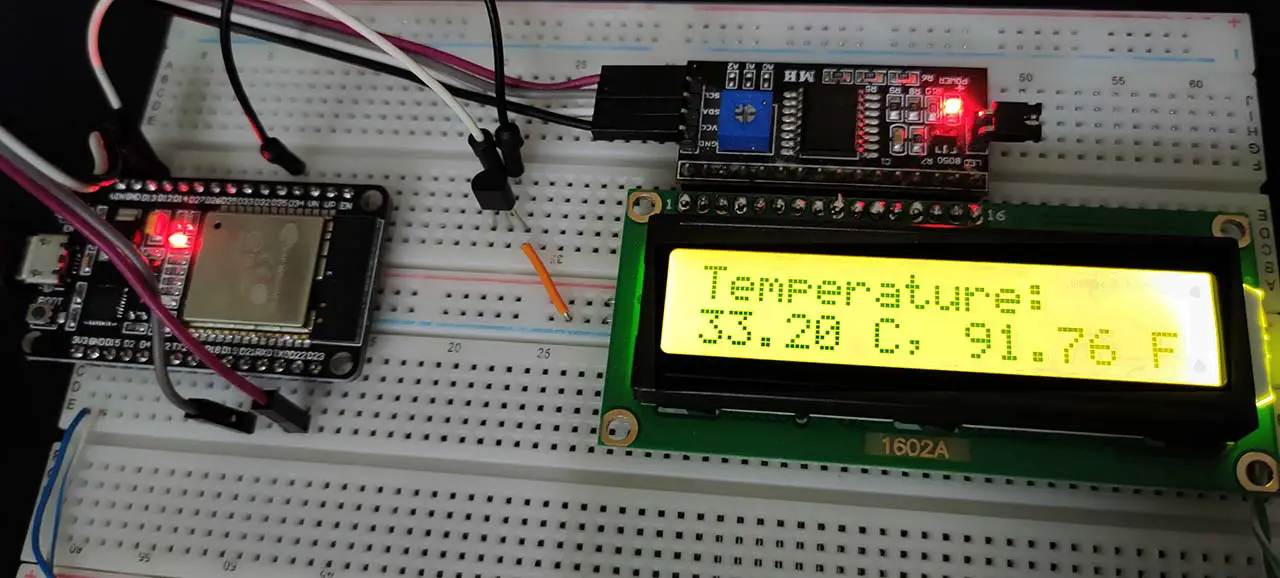
ESP32 Temperature Sensor LM35 Interfacing (in Arduino IDE) ESP8266
The ESP32-C3 has a built-in sensor used to measure the chip's internal temperature. The temperature sensor module contains an 8-bit Sigma-Delta analog-to-digital converter (ADC) and a digital-to-analog converter (DAC) to compensate for the temperature measurement.. esp_err_t temperature_sensor_install (const temperature_sensor_config_t.
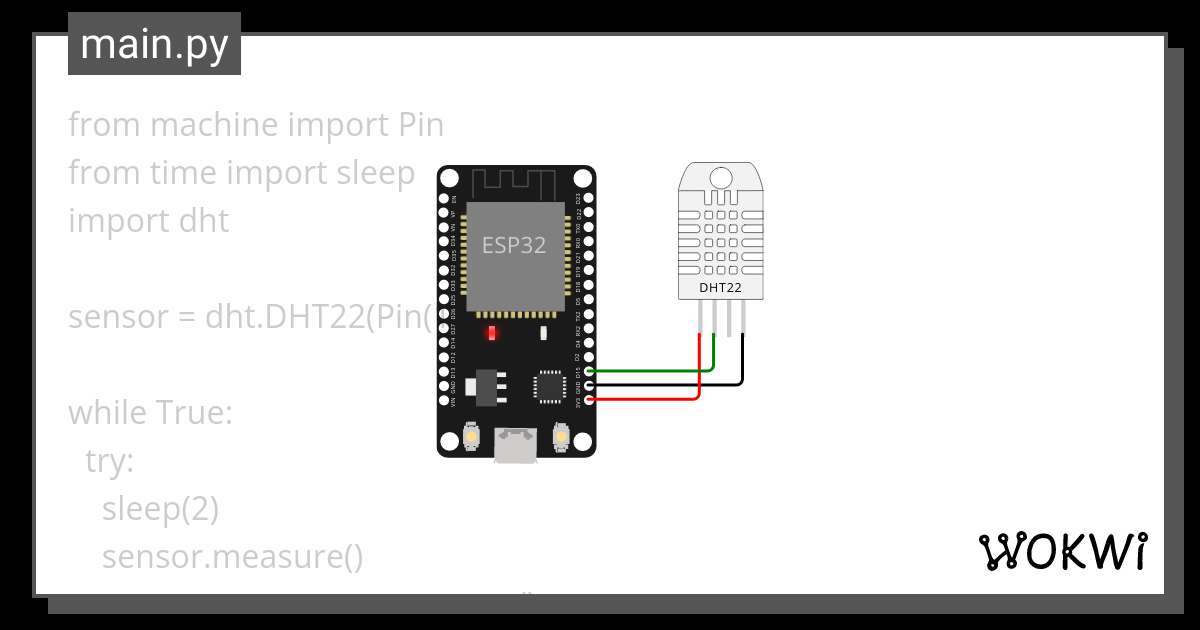
Sensor Temperatura ESP32 Wokwi ESP32, STM32, Arduino Simulator
ESP32 Internal Temperature Sensor Example. ESP32 has on chip temperature sensor, This sensor is not usable to monitor external temperature, It is used to monitor its core temperature. In this tutorial we are monitoring on chip temperature sensor data. Update: The temp sensor is obsolete on most of the ESP32.

MicroPython DS18B20 Temperature Sensor with ESP32
How LM35 Temperature Sensor Works. The LM35 sensor outputs the voltage in linearly proportion to the Celsius temperature. The output scale factor of the LM35 is 10 mV/°C. By measuring the voltage on the LM32's OUT pin, we can calculate the temperature value.

Esp32 built in temperature sensor
The internal temperature sensor is part of some ESP32 boards including ESP32-S2, ESP32-S3, ESP32-C3, and ESP32-C2. This onboard temperature sensor is usually used to monitor the core temperature changes of the chip, whereby possessing a temperature range of -40°C to 125°C. It features an 8-bit Sigma-Delta ADC and a temperature offset DAC.

Sistema Embarcado com ESP32 e Micropython Aula 10 Sensor de Temperatura interno ao ESP32
Tested in AI Thinker ESP32 Cam module. Can be add to standard camera example in Arduino. While ESP32 Cam module was idle - the temperature was around 47C. One value per 10-15 sec while idle. While camera video stream was on - the temperature was rising to around 57C. See temperature values in serial monitor at 115200. Best regards, Anton S

ESP32 desde Cero Tutorial 5 Sensor de Efecto Hall Interno YouTube
The ESP32-C3 has a built-in sensor used to measure the chip's internal temperature. The temperature sensor module contains an 8-bit Sigma-Delta ADC and a DAC to compensate for the temperature offset. Due to restrictions of hardware, the sensor has predefined measurement ranges with specific measurement errors. See the table below for details.

ESP32 Internal Temperature Sensor The Engineering Projects
Learn how to display temperature on OLED using ESP32 and DS18B20 one wire temperature sensor. The detail instruction, code, wiring diagram, video tutorial, line-by-line code explanation are provided to help you quickly get started with ESP32. Find this and other ESP32 tutorials on esp32io.com.
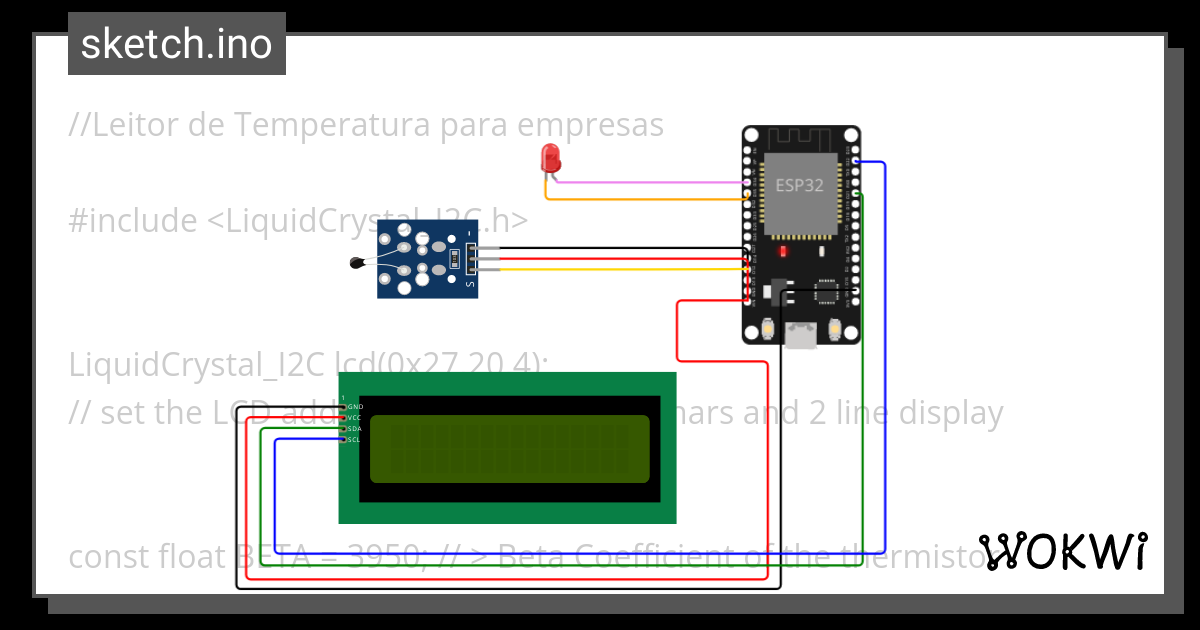
leitor de temperatura Wokwi ESP32, STM32, Arduino Simulator
Components Needed To Build ESP32 And LM35 Sensor Project Componentes de hardware. ESP32 Wroom 2.4 GHz with integrated Antenna x 1; LM35 Precise TO-92 Temperature sensor x 1; Alambre Dupont x 1 juego; Micro USB Cable for ESP32 (for powering ESP32 and programming) x 1; Software. Arduino IDE; Guide. How to Install ESP32 Core on Arduino IDE

Esp32 built in temperature sensor
Learn how to use temperature sensor with ESP32, how to connect DS18B20 temperature sensor to ESP32, how to program ESP32 step by step. The detail instruction, code, wiring diagram, video tutorial, line-by-line code explanation are provided to help you quickly get started with ESP32. Find this and other ESP32 tutorials on esp32io.com.

2. ESP32 Internal Temperature Sensor Hindi YouTube
The purpose of this sensor is not to measure the ambient temperature, but the temperature of the CPU. Normally, to detect if it is overheating excessively. However, if the ESP32 has just turned on after a long disconnected period (for example, after a long Deep Sleep), it can give an approximate measurement of the ambient temperature.

MicroPython DS18B20 Temperature Sensor with ESP32
I was confused, because the result was 140 ° F or 60 ° C, so I wondered, what will this temperature be like? it is very hot, and the ambient temperature I am at is 19 ° C or 66.2 ° F. I want to control the temperature of the device, so be warned if it's too hot to melt the device. Thanks again for the reply.
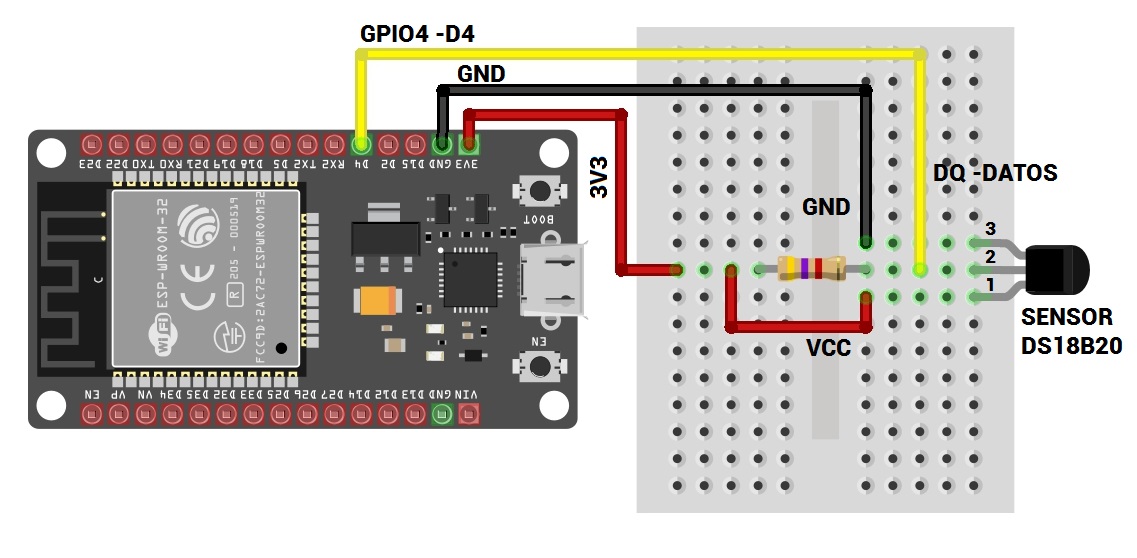
Crea tu Dashboards de temperatura con ThingSpeak, ESP32 y DS18B20
ESP32's on-chip temperature sensor cannot be used for monitoring external temperature. It can only be used to monitor the temperature of the core. This temperature sensor is available on some selective ESP32 boards and obsolete on most ESP32 variants. It has a high-temperature sensing range of -40 to 125 °C.

Projeto ESP32 Display e Sensor DHT22 Medindo Temperatura e Umidade
The DS18B20 temperature sensor communicates using one-wire protocol and each sensor has a unique 64-bit serial code, so you can read the temperature from multiple sensors using just one single GPIO. You just need to wire all data lines together as shown in the following schematic diagram:
- A Que Cilindrada Pertenece La Aprilia Rsv4
- How Much Money Is A Monkey
- Junta De Compensacion El Cañaveral
- Enciclopedia De Enfermeria Oceano Pdf
- Case In A Case Sql
- Como Eliminar Mal Olor De Cañerias
- Carrer Holanda 16 1 43870 Amposta Tarragona
- Combustibles Y Leñas El Aeropuerto
- Albóndigas Con Harina Y Huevo
- Carrefour Murcia Cestas De Navidad